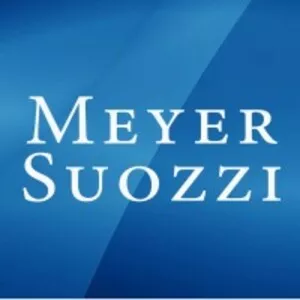I have written about the cross-section between fraud and legal malpractice claims against attorneys. See ,e.g., Commercial Division Finds Attempted Fraud Claims Against Attorneys Duplicative of Malpractice Claims and Subject to Three-Year Statute of Limitations; Are Claims of Fraud and Professional Malpractice Duplicative?.
Attorneys often argue that attempted claims of fraud against them are nothing more than legal malpractice claims and therefore are duplicative and must be dismissed. This is indeed a viable defense. See Gourary v Green, 143 A.D.3d 580 (1st Dep't 2016)("The fraud claims are duplicative of the legal malpractice claim, since they arise from the same facts as underlie that claim and involve no additional damages separate and distinct from those alleged in connection with the malpractice claim.").
As shown by a new decision of the Supreme Court in New York County, that defense may not always be effective to dispense with fraud claims at the pleadings stage. Federal Insurance Company v. Lester Schwab Katz & Dwyer, LLP, Index No. 151093/2021 (NY Sup. Ct, NY Co., Nov. 16, 2021).
In Lester, plaintiff was an insurance company that hired the defendant law firm to represent the insurance company's insureds in an underlying personal injury action. Plaintiff claimed that it was forced to settle the case for a higher amount due to defendants' failure to defend the insureds prudently and properly. Plaintiff alleged various acts of alleged malpractice, and also included claims of fraud and negligent misrepresentation against the attorneys. Both of those claims were based upon the same underlying factual assertion - that defendants allegedly had a conflict of interest with a co-defendant in the underlying personal injury action and did not disclose that to the insurance company plaintiff prior to being retained to defend the insureds in that action. (The defendants did contend that the conflict of interest was disclosed "to the carrier" and was further identified in their initial report on the underlying personal injury litigation.)
The Court denied the attorney-defendants' motion to dismiss pursuant to CPLR 3211(a)(1) & (7), which of course, is addressed solely to the complaint at the pleadings stage, where the question is whether the complaint has adequately stated a recognized cause of action.
Fraud Claim is Viable
In rejecting defendants' attempt to dismiss the fraud claim, the Court simply commented in passing that the allegations were sufficient to state such a claim, "distinct from the legal malpractice claim." It sustained the fraud claim as follows:
Plaintiff alleges that Lester Schwab made ( a) a false representation of fact to the Insured that the conflict check returned negative results; (b) defendants had knowledge of the falsity as shown by their internal e-mails; (c) the misrepresentation was made to induce plaintiff's reliance that Lester Schwab did not have any conflict of interest and so could continue its representation of the Insured in the underlying case; ( d) the Insured and its insurers justifiably relied on the misrepresentation as it is known that performing a conflict check in the context of litigation, especially with multiple parties, is required to be done so that the Insured and its insurers could rely on Lester Schwab to advocate and protect their interests solely; and (e) the Insured and its insurers were injured by the reliance on the misrepresentation.
On this pre-Answer motion to dismiss, Plaintiff's allegations are sufficient to sustain a fraud cause of action distinct from the legal malpractice claim. Accordingly, Defendants' motion to dismiss is denied as to the fraud cause of action.
Negligent Misrepresentation Claim Survives as Well
Plaintiff also asserted a claim of negligent misrepresentation against the attorneys, insofar as the defendants' status as fiduciaries served as a basis for such claim. The Court refused to dismiss this claim as well, for similar reasons:
On a cause of action alleging negligent misrepresentation, the plaintiff is required to demonstrate "(1) the existence of a special or privity-like relationship imposing a duty on the defendant to impart correct information to the plaintiff; (2) that the information was incorrect; and (3) reasonable reliance on the information" (J.A.O. Acquisition Corp. v Stavitsky, 8 NY3d 144, 148, 831 NYS2d 364, [2007]; Ginsburg Dev. Companies, LLC v Carbone, 134 AD3d 890, 894, 22 NYS3d 485,490 [2015]).
Plaintiff contends that because of Defendants' failure to disclose the alleged conflict of interest, Defendants (a) did not assert a cross-claim against the City; (b) failed to perform any meaningful investigation into the City's potential liability and responsibility for installation, maintenance, and repair of the sidewalk and tree well; and ( c) did not oppose summary judgment, which resulted in the dismissal of the City as a co-defendant.
At this juncture in the case, prior to any discovery, Plaintiff's allegations are sufficient to sustain a negligent misrepresentation cause of action, distinct from the legal malpractice claim. Accordingly, Defendants' motion to dismiss is denied as to the negligent misrepresentation cause of action.
Commentary
Identifying actual or potential conflicts of interest is obviously an important obligation for an attorney prior to accepting a representation. This should always be undertaken and adequately documented. This is not only required by the Rules of Professional Conduct (see,e.g., Rules 1.7 through 1.12), but failing to do so adequately and properly prior to the representation and/or when conflicts may arise can in fact form the basis for fraud claims.
Originally published Dec 06, 2021
The content of this article is intended to provide a general guide to the subject matter. Specialist advice should be sought about your specific circumstances.


